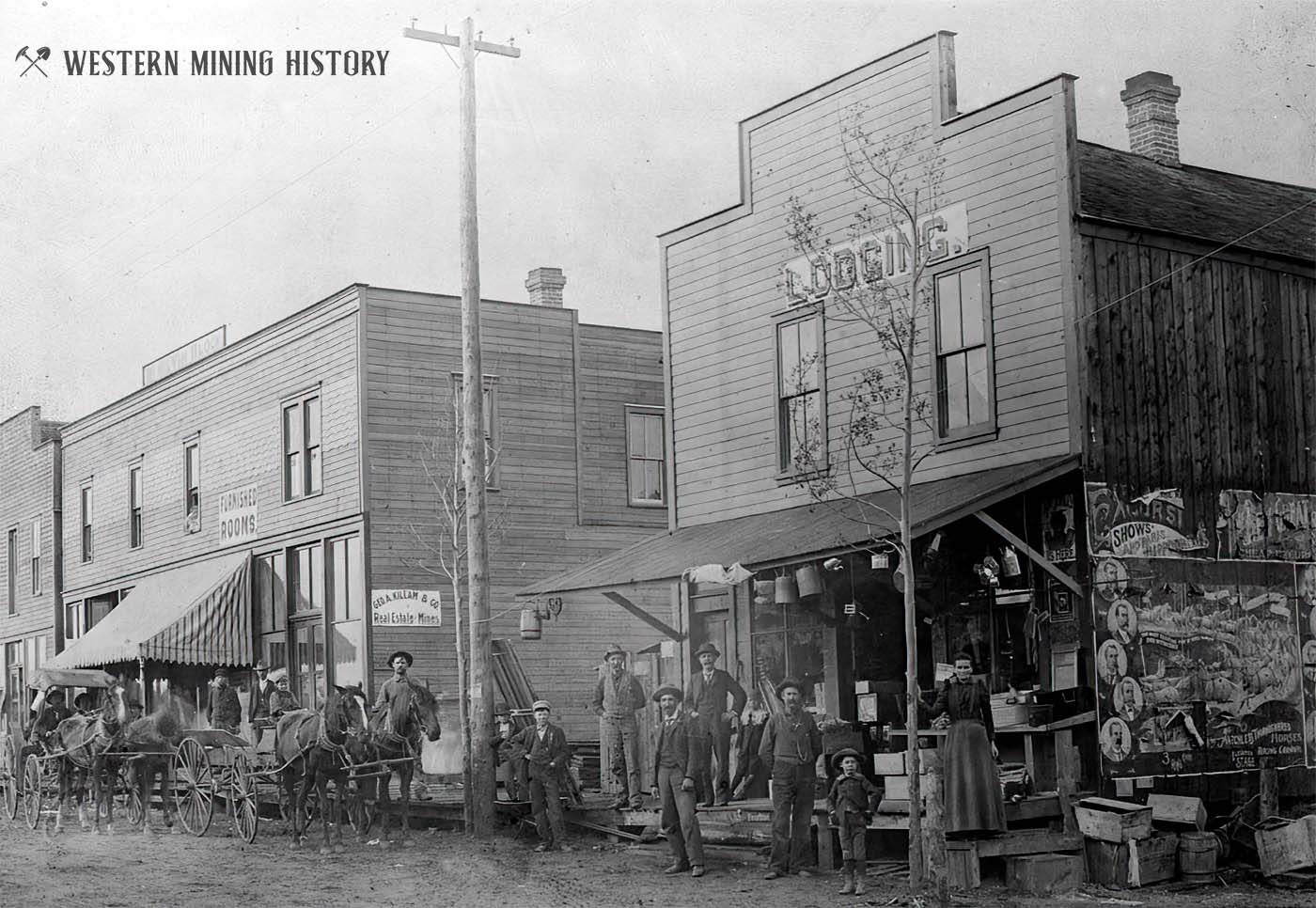Gillett History
By Jan MacKell Collins
Before it was even a town, Gillett – located high in the mountains on the backside of Pikes Peak near the famous Cripple Creek District – was known by many names. Shortly after the town of Beaver Park was platted along today’s Highway 81 in 1892, a nearby suburb became known as West Beaver Park. Later, the name was changed to Cripple City. As the Midland Terminal Railroad built tracks from Divide, the name was changed again to Gillett.
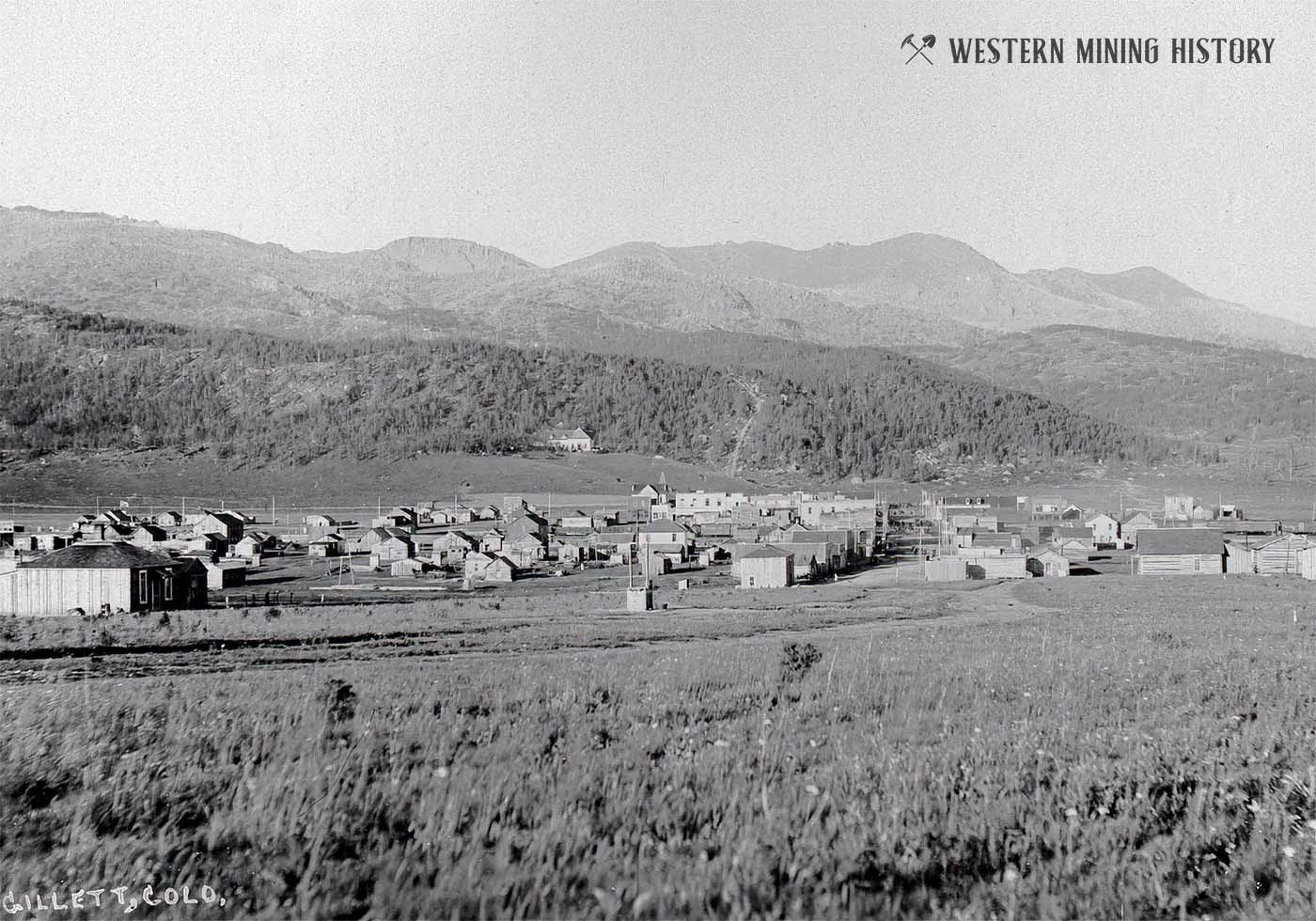
The new city was renamed for railroad man W.K. Gillett, who, along with Henry Collbran, Irving Howbert and Harlan Lillibridge, were making big plans. The partners created the Midland Terminal Railroad, a spur of the Colorado Midland Railroad which would turn at Divide and head toward the Cripple Creek District (Gillett wanted to name the new railroad the “Cripple Creek and Gold Gulch Railroad,” but when the directors of the Colorado Midland objected to such a whimsical name, the moniker was changed to the Midland Terminal). The new company was officially formed in October 1893.

Early buildings at Gillett included log cabins but also hewn wood structures. The new town attracted such influential men as Albert E. Carlton, who had designs on a new freight company in Cripple Creek, as well as Charles Tutt and Spencer Penrose, two longtime friends from Colorado Springs who had already made much money in the copper mines of Utah. Gillett was the perfect place for the two young wealthy bachelors to build an entertainment mecca. Accordingly, Tutt and Penrose built an exclusive horse track and casino and called it “Sportsman’s Park.”
Gillett was platted on January 19, 1894. Of the budding city, “a site with more picturesque surroundings could not have been chosen,” crowed the 1894 Cripple Creek District Directory. Located in a vast meadow with stunning views all around, Gillett would be the first town reached by the Midland Terminal on its way into the Cripple Creek District. Plans were underway to build a $150,000 “railway hotel station,” meant to be a “resort hotel adapted for the comfort and enjoyment of leisure seekers and tourists, and for the residents of the district.”
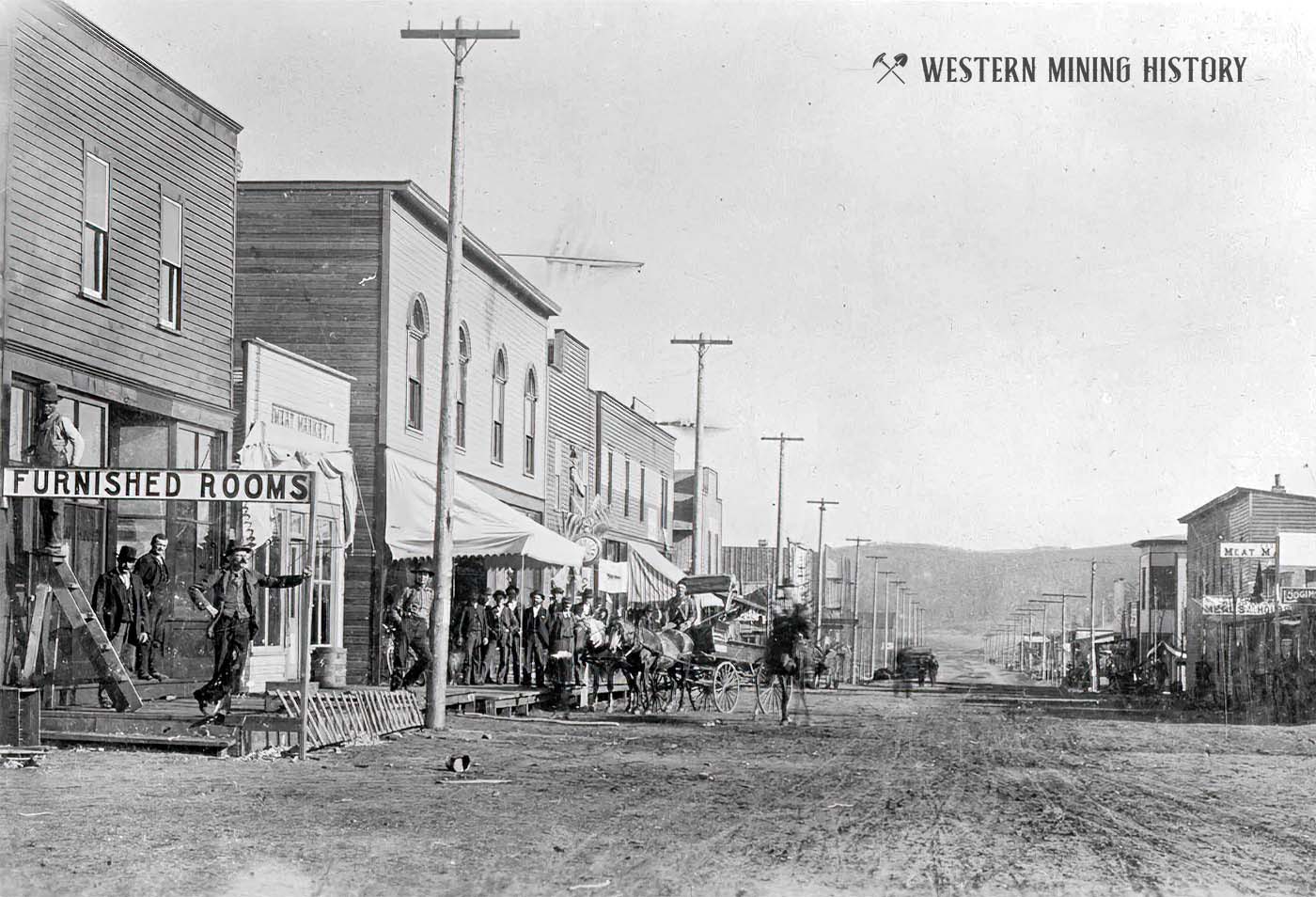
The main drag through Gillett was named Parker Street after First National Bank president J.M. Parker. The avenue was soon lined with tidy, false-fronted buildings and aspen trees which had been planted for accent. In anticipation of the railroad, a nice wood depot and telegraph office also were built.
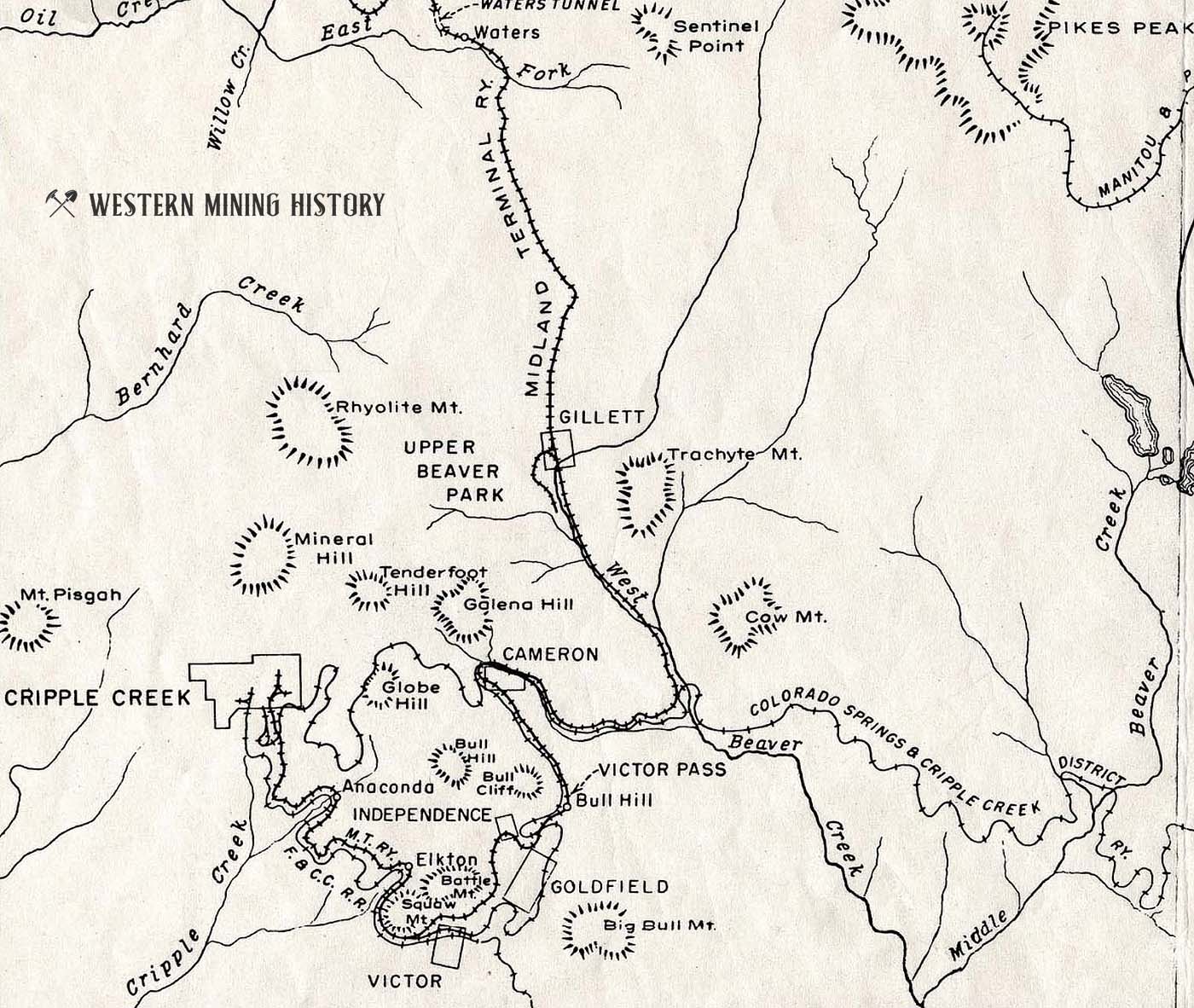
The Midland Terminal reached Gillett as planned, chugging gloriously into town on Independence Day in 1894. A month later, the post office opened, on August 29. Since the mountains between Gillett and Cripple Creek were too steep on which to build a railroad, a stage road led to the latter town instead as the Midland Terminal continued building through Beaver Park and toward the city of Victor.
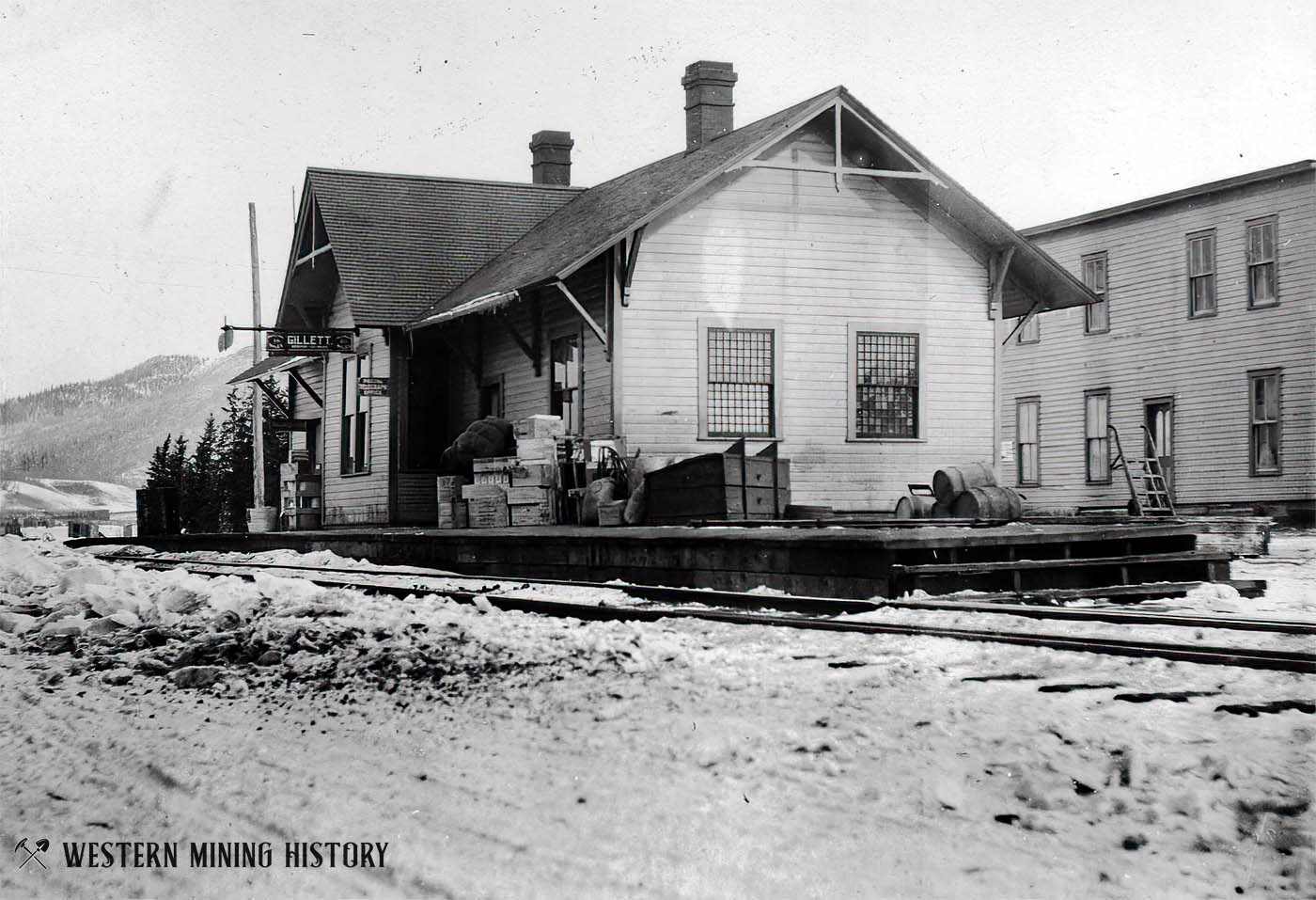
On September 11, Pullman sleeper service began on the rail lines between Denver and Cripple Creek. Now, sleeper passengers could disembark at Gillett depot and catch a stage into Cripple Creek, or stay the night in town. Other travelers also stayed the night in Gillett before traveling on, bringing extra commerce to town.
Gillett did suffer minor social issues. Tutt and Penrose soon realized that their wealthy friends were quite content patronizing the elite Broadmoor Casino (the precursor to the fabulous Broadmoor Hotel) in Colorado Springs, rather than making the trek all the way to Gillett. Thus, the racetrack at Sportsman’s Park never opened for more than two days a week and eventually scaled down to just a few Saturdays in the summer. The newly-built Monte Carlo Casino suffered the same fate and was eventually converted to a school for the children of the town.
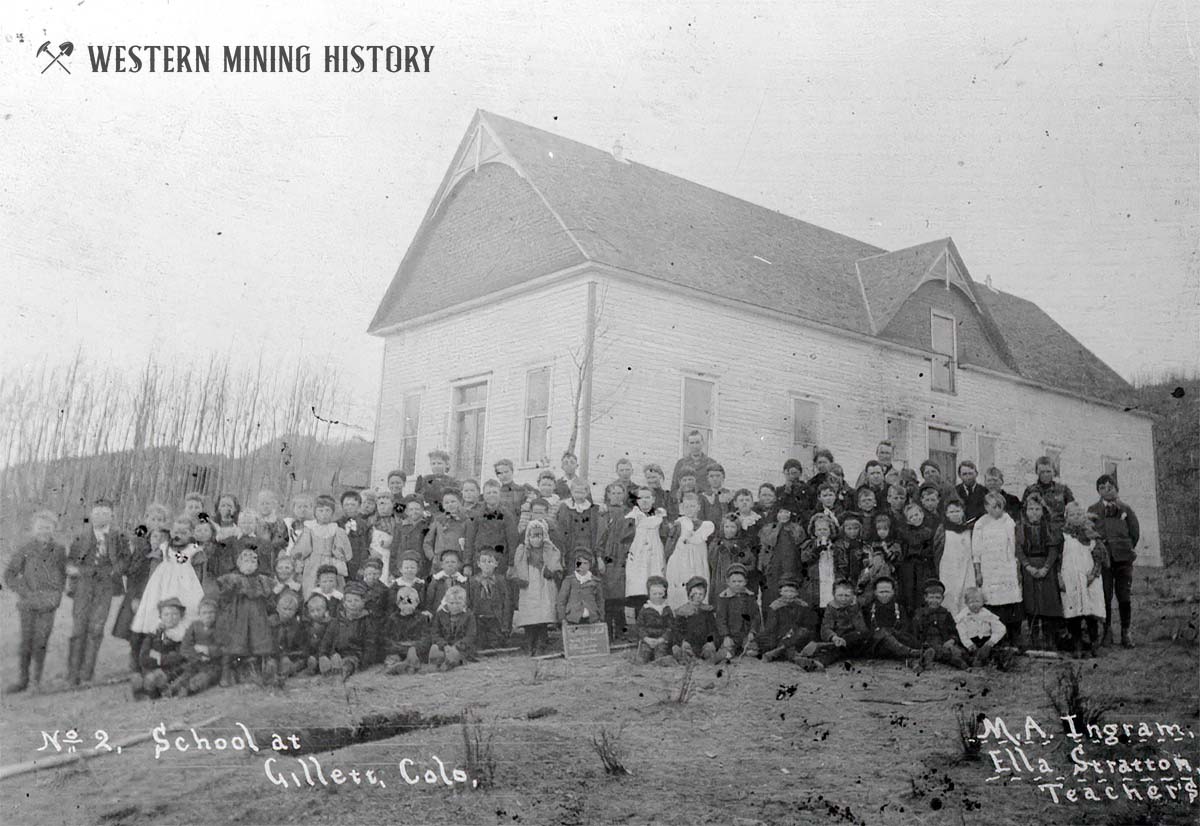
Even budding madam Pearl DeVere initially purchased property in Gillett, but soon moved to Cripple Creek, where she became the city’s most famous harlot. Even so, a city jail was built at Gillett to imprison any lawbreakers who happened along. Outside of town, the newly erected Beaver Park Stamp Mill processed ore from the Lincoln Mine (alternately known as the Lincoln & Gibbons), as well as the King of Diamonds. There was also the Gillett Reduction Works. Additional employment could be found at the shops for the Midland Terminal.
1895 Mexican Bullfight
In August 1895, the only “legal” bullfight in the United States took place at Gillett. The event was the brainchild of Joe Wolfe, owner of Cripple Creek’s prestigious Palace Hotel and described as a “sometime confidence man.” Wolfe partnered with Wild West performer and rodeo cowboy “Arizona Charlie” Meadows to form the “Joe Wolfe Grand National Spanish Bull Fight Company.” As a means to secure the support of the town council, Wolfe appointed them as the board of directors of his company. But it was Charlie Meadows who was Wolfe’s ace in the hole.
The six-foot-six tall, long-haired, mustachioed man from Arizona surely made a presence to the citizens of Gillett. Meadows’s career in rodeo began at Payson, Arizona in 1884. In 1888, he hosted a “cowboy contest” in Prescott where he earned a reputation as a “crack shot” and the “fastest man with a rope in the business.” A few months later, he was a winning participant in Prescott’s first rodeo.
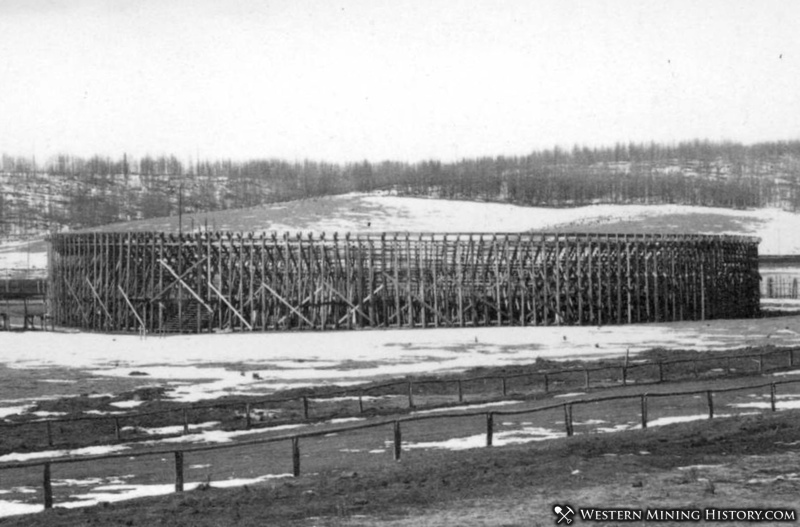
Meadows used his skills and accompanying flair for finesse to eventually turn from rodeo cowboy to showman. For seven years, he had toured several countries with a Wild West show, worked with Buffalo Bill’s traveling troupe, and eventually formed his own show. He was well known throughout the West by the time he hooked up with Joe Wolfe. Together, the pair borrowed $5,000 to build a five-thousand-seat amphitheater at Gillett, print tickets and posters, and secure real matadors and bulls from Mexico for the event. Wolfe’s contribution to the town included the purchase of nine and a half blocks of real estate.
Almost immediately, people began voicing their opposition to the upcoming event. The Colorado Springs Gazette in particular published several editorials. “If it be illegal to import bulls for fighting at the Atlanta Exposition, surely it must be illegal to import them across the border for fighting at the Gillett Exposition,” argued one article. “Here is a chance for Francis Hill of the Humane Society to write to the Secretary of the Treasury, informing him that it is proposed to import bulls for the same purpose of fighting and ‘keep them out of El Paso County.’”
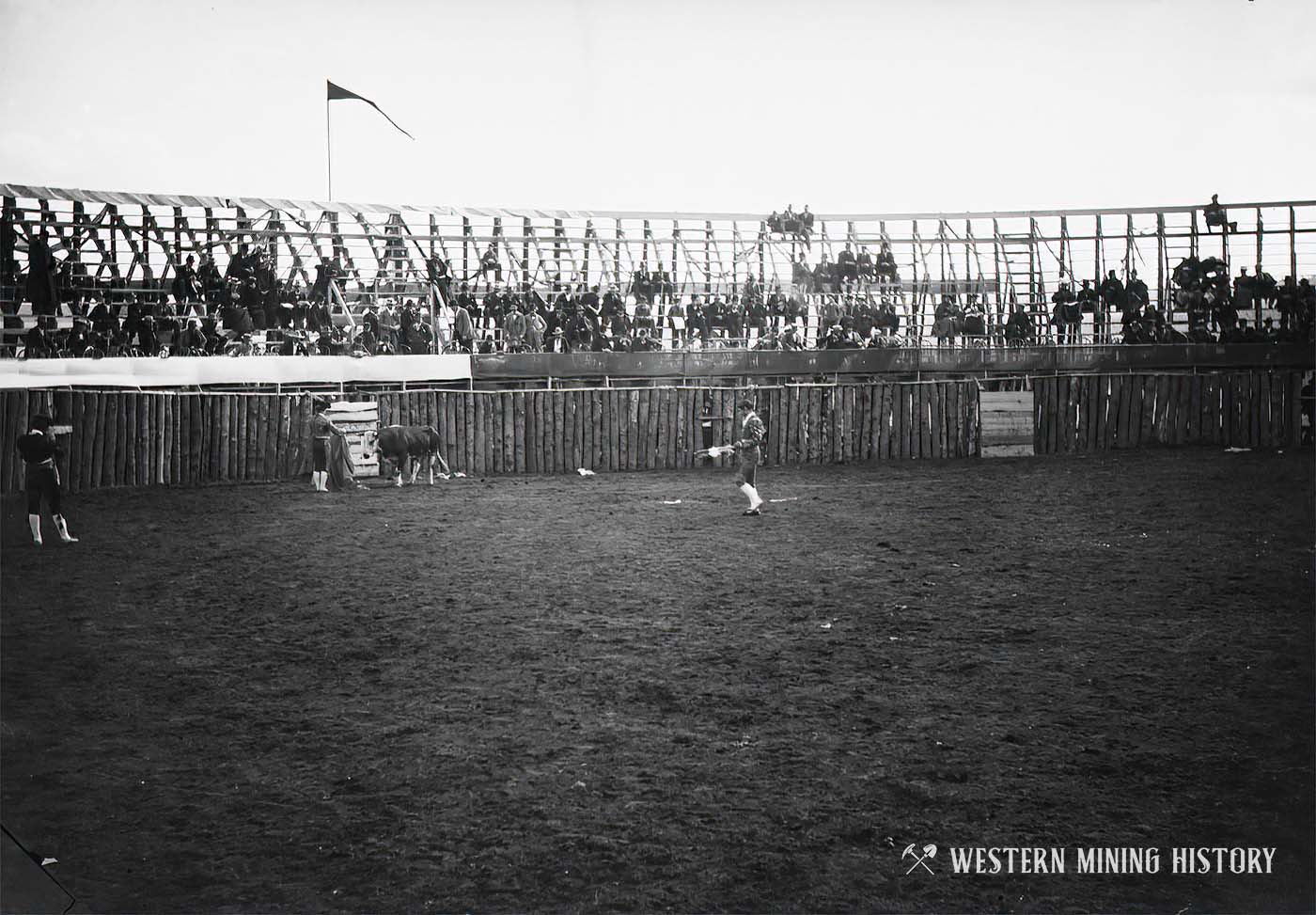
The authorities did ultimately stop the bulls and their keepers at the Texas border. But the matadors still came, and Wolfe and Meadows managed to wrangle some local bulls who were anything but the fighting variety.
Things took an equally nasty turn when Wolfe invited renowned bunco artist Soapy Smith to set up his games of chance outside the entrance to the event. Soapy took so much money from his victims that some of them could not afford the $5 ticket to get in. Those who did gain admittance on the first day were shocked as the bulls were led to a cruel death. Fewer than three hundred spectators attended on the second day. On the third day, Wolfe and Meadows folded the show and were promptly arrested for animal cruelty. In all, the total proceeds were a mere $2,600.
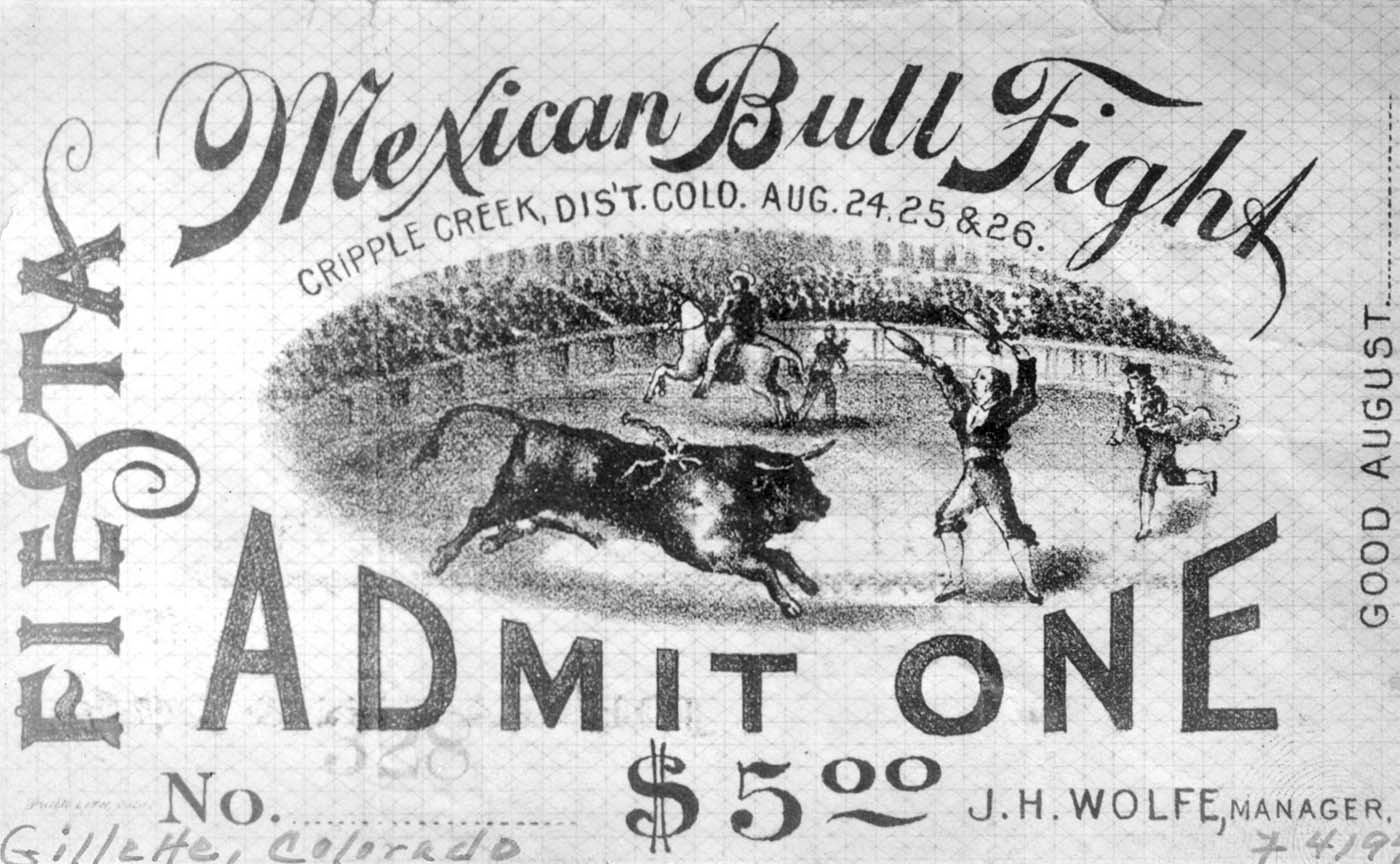
Gillett citizens quickly overcame their embarrassment over the infamous Gillett bullfights. By late 1895, two daily trains were still bringing plenty of passengers to town, and citizens had their choice of four newspapers to read on the trip. As of 1896, 1,500 residents had access to numerous businesses, including three doctors and an amazing nine saloons. Father Volpe’s Catholic Church and a Congregational Church were built in 1897. By 1899 the Golden Crescent Water and Light Company, owned by the Woods brothers in Victor, was servicing Gillett.
Gillett Declines
Unfortunately, Gillett proved to be too far from the mines of the Cripple Creek District, and much of the town was eventually vacated. Even with eight trains passing through daily, the population in 1900 was only a little over five hundred people, including those living at nearby Monte Carlo Lakes. At least there were still a few bars, and the school still supported a handful of students with Miss Mary A. Wilson as principal.
The Co-Operative Brick Company on the outskirts of town was supplying bricks for surrounding businesses, homes, and mines. Eventually, however, both the Lincoln and King of Diamonds mines played out, and the Beaver Park Stamp Mill became useless.
The 1902 district directory commented that Gillett’s “remoteness from the working mines has told against it, and at the present time its population is at a very low ebb.” A hopeful endnote stated, “It is not at all improbable that something may occur at any time which will ‘boom’ the town and make it one of the largest in the District.” But the numbers didn’t lie; the directory reported Gillett’s population at a mere three hundred people.
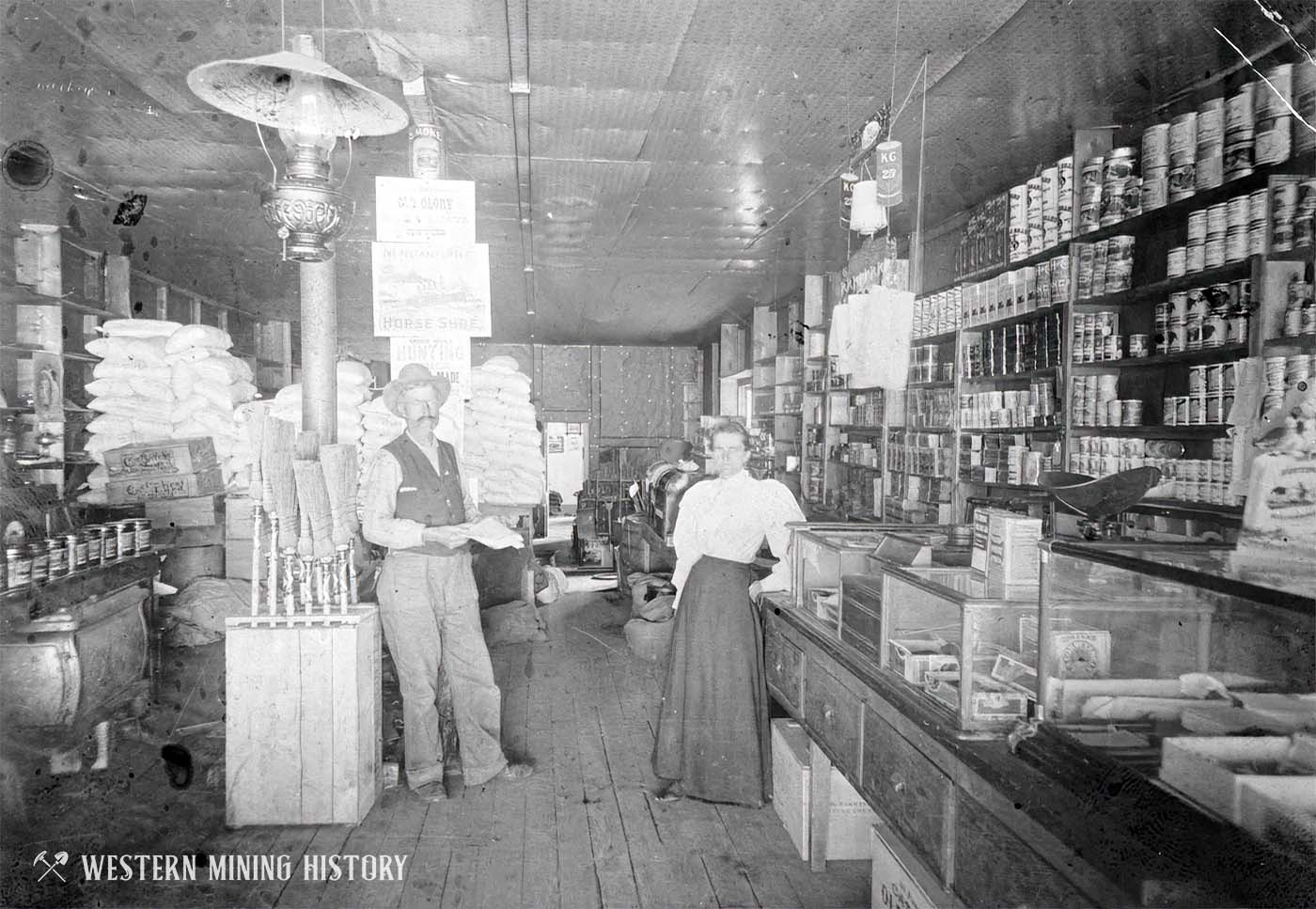
Gillett’s last newspaper, The Forum edited by Mayor James Parfet, closed in 1905. Now only 250 people remained in town, and neither church had a minister. The post office, run by Charles Adams for many years, closed briefly in 1908 but reopened six months later. The reprieve was brief, for the 1910 census counted only forty-four people living in town.
In 1911, old Gillett entered a new era as a ranching community when the Vetter family purchased much of the land there, and the post office closed a final time in 1913. Gillett’s once grand buildings sank into the ground, were torn down, or burned. Rufus Porter, the miner-turned-writer of the District town of Goldfield, remembered a man named Greasy Miller who lived at Gillett during its waning years. Greasy “burned down a score of houses by raking the ashes from the stove onto the floor. When the shack caught fire he’d simply move to another one.”
In time, some families moved their loved ones’ graves from the cemetery to other local graveyards. The pews and the pulpit from Father Volpe’s Catholic Church were moved to St. Peter’s Church in Cripple Creek. The old church was used as a hay barn until it burned in 1949, and in 1965 a flood from a dam break above town washed away Gillett’s remaining buildings. Today, Gillett is known as Gillett Flats. The decaying ruins of the church, which sit on private land, can be spotted from the highway.
A Tour of Colorado Mining Towns
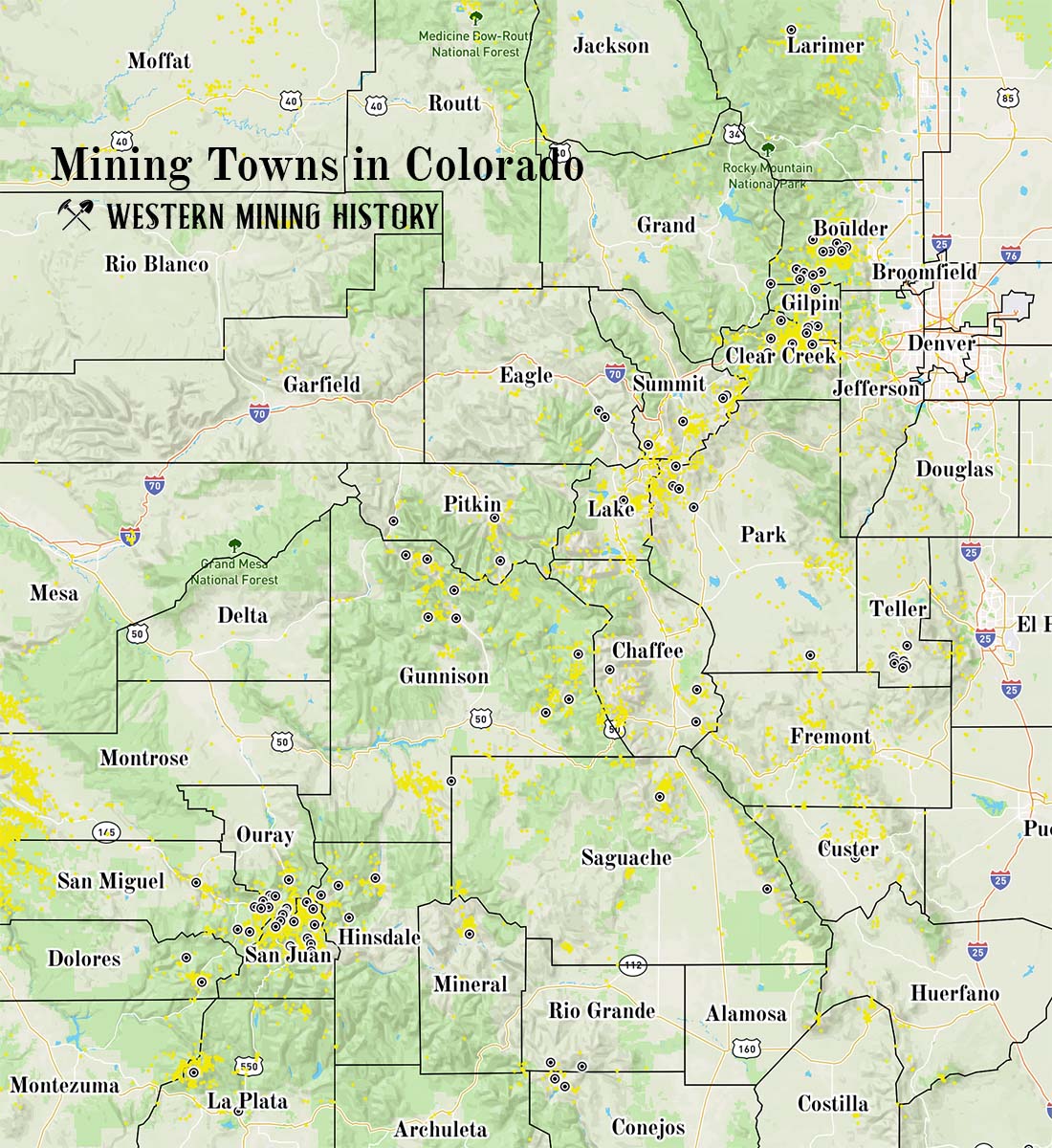
Explore over 100 Colorado mining towns: A tour of Colorado Mining Towns.
Colorado Mining Photos
More of Colorado's best historic mining photos: Incredible Photos of Colorado Mining Scenes.
